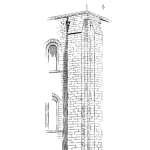
The 5-Whys approach in product development enhances reliability by understanding failure modes. The 5-wys technique is a powerful tool for root cause analysis. Originally developed by Sakichi Toyoda and later popularized by Keiichi Ono.
[Read more…]Your Reliability Engineering Professional Development Site
A listing in reverse chronological order of articles by:
by Semion Gengrinovich Leave a Comment

The 5-Whys approach in product development enhances reliability by understanding failure modes. The 5-wys technique is a powerful tool for root cause analysis. Originally developed by Sakichi Toyoda and later popularized by Keiichi Ono.
[Read more…]by Laxman Pangeni Leave a Comment

In reliability engineering, we often need to extrapolate test data collected under accelerated stress conditions to predict performance under normal operating conditions. Two mathematical models commonly used for this purpose are the power-law model and the exponential model. But which one should you choose when your data fits both models equally well? This article explores the differences between these models and provides practical guidance on making this critical decision.
by Semion Gengrinovich Leave a Comment

Preventive maintenance is a proactive approach used by industries to ensure the longevity and optimal performance of their assets. It involves regular maintenance tasks such as cleaning, lubrication, parts replacement, and equipment repairs to prevent unplanned downtime and costly breakdowns.
[Read more…]by Semion Gengrinovich Leave a Comment

Software reliability and Hardware reliability are two distinct Concepts within the field of engineering each with its own unique characteristics and measurement challenges.
[Read more…]by Laxman Pangeni Leave a Comment

In reliability engineering, predicting system behavior over time is crucial for maintenance planning and risk assessment. One powerful mathematical tool for this analysis is Markov Chain modelling. In this article, I’ll demonstrate how Markov Chains can predict device reliability using a real-world example: battery reliability in reliability testing facilities.
[Read more…]by Semion Gengrinovich Leave a Comment

Understanding the different types of data and their respective uses is critical for product development, testing, and analysis. Each type of data plays a role in ensuring that products meet quality standards and fulfill user needs. As a mechanical engineer with a focus on R&D testing and data analysis, you would likely encounter and utilize these various data types throughout the product development and validation process.
[Read more…]by Semion Gengrinovich Leave a Comment

Defining a proper product reliability goal is a critical step in ensuring that a product meets customer expectations and performs adequately throughout its intended lifespan. This also involves a careful balance between the required level of reliability and the associated costs and complexities of achieving that reliability.
[Read more…]by Laxman Pangeni Leave a Comment

Reliability is at the heart of robust product design. Engineers and reliability professionals continuously seek ways to predict, assess, and improve product longevity. One fundamental approach to achieving this is the Damage-Endurance Model, a powerful tool in reliability engineering that helps quantify failure risks and optimize designs.
[Read more…]by Semion Gengrinovich Leave a Comment

Defining a proper product reliability goal is a critical step in ensuring that a product meets customer expectations and performs adequately throughout its intended lifespan. This also involves a careful balance between the required level of reliability and the associated costs and complexities of achieving that reliability.
[Read more…]by Semion Gengrinovich Leave a Comment

Gage repeatability and reproducibility (GR&R) is a statistical tool used in quality control to assess a measurement system’s capability. It evaluates the amount of variation in the measurement data that is due to the measurement system itself rather than the product being measured. GR&R helps to determine if a measurement system is reliable and whether it’s producing repeatable and reproducible measurements.
[Read more…]by Laxman Pangeni Leave a Comment

Reliability analysis is essential for ensuring long-term performance of hardware components. However, predicting failures with small sample sizes is a challenge. Traditional statistical methods often require large datasets, whereas Bayesian statistics can incorporate prior knowledge to improve predictions by updating beliefs as new data becomes available.
[Read more…]by Semion Gengrinovich Leave a Comment

Gage Repeatability and Reproducibility (GR&R) is a statistical tool used in quality control to assess a measurement system’s capability. It evaluates the amount of variation in the measurement data that is due to the measurement system itself, rather than the product being measured.
[Read more…]
In reliability engineering and data-driven maintenance strategies, understanding different failure modes is crucial for designing robust systems. Survival analysis is a powerful statistical tool that allows us to analyze time-to-event data and assess the reliability of components over time. In this article, we’ll explore how survival analysis can be applied to multi-modal failure scenarios using R.
[Read more…]by Semion Gengrinovich Leave a Comment

Accelerated life testing, ALT, is a method used in reliability engineering to assess the lifespan and performance of a product under accelerated stress conditions. The goal is to uncover potential faults and failures in a shorter time frame than would be possible under normal operating conditions. ALT is particularly useful when the product’s expected lifespan is long and waiting for failures to occur naturally is not feasible.
[Read more…]by Semion Gengrinovich Leave a Comment

Highly Accelerated Stress Screening (HASS) and Highly Accelerated Stress Audit (HASA) are advanced testing methods used to identify potential defects in full assemblies, while burn-in testing is typically applied at the component level. These tests are designed to expose products to extreme conditions to precipitate failures, allowing for corrective actions before the products reach customers.
[Read more…]